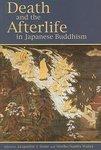
Book Summary
For more than a thousand years, Buddhism has dominated Japanese death rituals and concepts of the afterlife. The nine essays in this volume, ranging chronologically from the tenth century to the present, bring to light both continuity and change in death practices over time. They also explore the interrelated issues of how Buddhist death rites have addressed individual concerns about the afterlife while also filling social and institutional needs and how Buddhist death-related practices have assimilated and refigured elements from other traditions, bringing together disparate, even conflicting, ideas about the dead, their postmortem fate, and what constitutes normative Buddhist practice. The idea that death, ritually managed, can mediate an escape from deluded rebirth is treated in the first two essays, followed by explorations of Buddhist death rites that worked to encourage the maintenance of emotional bonds with the deceased and, in so doing, helped structure the social world of the living. The rise of standardized funerals in Japan's early modern period forms the subject of a chapter that shows how the Soto Zen sect established itself in rural communities by incorporating local religious culture into its death rites. The final three chapters deal with contemporary funerary and mortuary practices and the controversies surrounding them.
Book Details
| Book Name | Death And The Afterlife In Japanese Buddhism |
| Author | Jacqueline I. Stone, Mariko Namba Walter |
| Publisher | University Of Hawaii Press (Oct 2008) |
| ISBN | 9780824832049 |
| Pages | 382 |
| Language | English |
| Price | 2611 |








